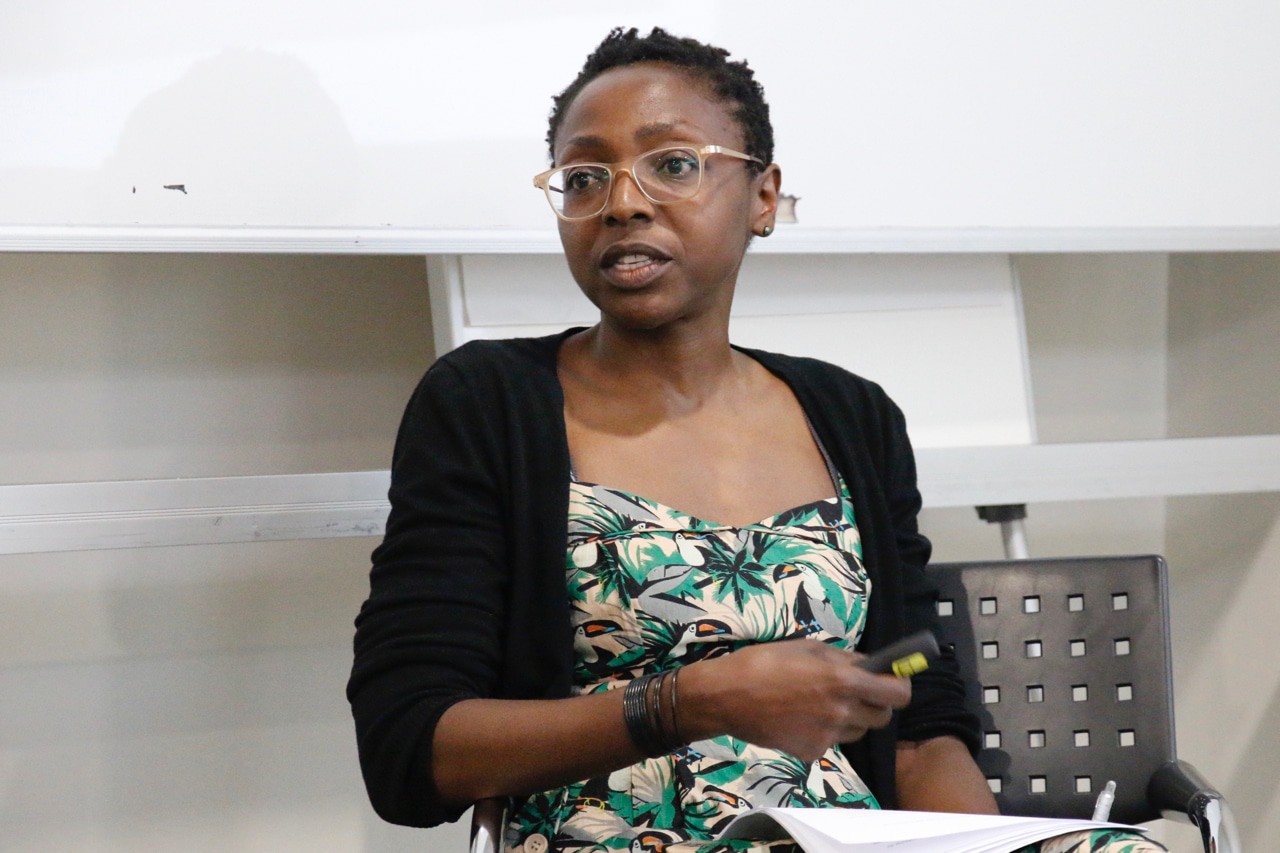“I struggle with the ways in which contemporary African writers, in particular, continue to be assessed by their ability to represent and be representative of African ‘realities’. Not only does this suggest something static and unchanging in our perceptions of the continent, it detracts from the harder but more productive work of analysing this literature critically. It is more judicious and indeed, more interesting, in my mind to engage with the literature and its potential (or not) rather than to fixate on the writers’ positionalities. Let’s read what lies between the pages and then have the discussion.” This is the opinion of STIAS Iso Lomso fellow Aretha Phiri of the Department of Literary Studies in English at Rhodes University.

She described her presentation entitled, ‘The Audacity of Imagining( African) History Anew’, as being informed loosely by her STIAS research project “and inspired by visits to and encounters with varied (memorialising) creative/artistic spaces that have afforded opportunities to think about the necessarily disruptive and audacious potential of the (literary) imagination”.
Phiri’s project, provisionally entitled, ‘Revising the Black Atlantic: African Diaspora perspectives’, broadly interrogates established ideologies about blackness through a transnational contemporary African diaspora lens and focuses on the work of female writers including Toni Morrison, NoViolet Bulawayo, Chimamanda Ngozi Adichie and Taiye Selasi.
In her research, she has noticed how contemporary Afrodiasporic literature, in particular, has typically been described as ‘Afropolitan’ and derided for not being African enough. It’s perceived as being packaged for a Western readership and not conversant with African everyday life.
“These writers have been variously accused of producing work that is meaningless to ordinary Africans; that fails to capture the ‘truth’ of African life; that is ‘untextured’ and contorts the African past and present,” said Phiri.
“But this elides the ways in which canonical African literature is itself an historical effect of pedagogy, publishing practices and global market forces. In this regard, African literature, as we know it, is indeed textured, moulded and manipulated,” she argued.
Rehashing old arguments
She pointed out though that these are not new arguments. Debates on the (representative) efficacy of African literature – especially that written in English – were the basis of the 1962 inaugural African Writing Conference held in Uganda. Pointing out that the opinions proffered were mostly those of men and connecting this with her observation that it is today “female writers of the African diaspora who seem to bear the brunt of critical censure (from male critics),” she suggested that we question the intricate layers of such gatekeeping and what it suggests about the creative prospects for Africa’s future.
“We are having similar arguments nearly 60 years later,” she said. “Subsequent generations of African authors are still seen as being enticed into presenting exotic subjects to appeal to non-African, white, Western audiences.”
But what is an authentic African voice and what is an appropriately African depiction? Skeptical about these conveniently generic terms – African ‘realities’ and ‘authentic’ Africa, Phiri believes that their easy deployment is not just problematic but devious. “I can’t help but question, especially where there is a fixation with an oppositional positioning to ‘the West’, the motivation behind the continuous need to homogenise history and experience; it’s a kind of epistemic disciplining in which we still use the same colonial and colonising frames to define the contours of Africanness – and the assumed blackness it signifies. There is unwillingness to view it as opaque, complex and necessarily contradictory. That would require a re-visioning of history and, for some, this is terrifyingly uncomfortable, for others it’s simply inconvenient.”
“Representivity can be reductive,” she added. “And that these female writers are re-writing Africa in more dynamic and less idiosyncratic ways, is telling. Literature, African or otherwise, cannot always and only be instrumentalised.”
This is significant when we take into account current (global South/higher education) imperatives for (curriculum) decolonisation and transformation which can be ideologically quite prescriptive and potentially exclusivist. Phiri believes that art, and our attitudes to it, is critical in determining the prospects for re-thinking and re-calibrating (African) history anew in not unproblematic but genuinely inclusive and productive ways.
“In my mind, literature – art – demands more of us. It affords imaginative frames of reference that invite us to read the ‘archive’ anew. For me, history needs to move beyond ‘discipline’ and ‘disciplining’; it is not ‘science’ in the strict sense. History is both perceived and interpreted reality. As such, it is, like narrative, inevitably malleable and open to a multitude of prospective ‘truths’.”
“While I am, like most, frustrated by the current political climate, I’m excited and hopeful about what I see as the prospects within it for bold and radical reimag(in)ings of Africa.”
Michelle Galloway: Part-time media officer at STIAS
Photograph: Christoff Pauw
